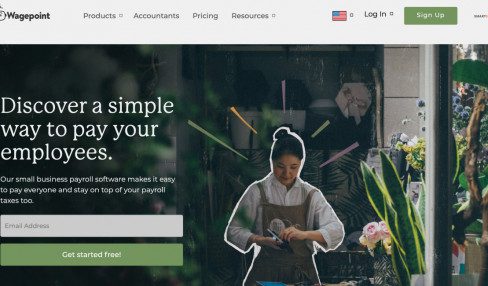How Can Cloud HR Software Help Businesses Align With Frequently Changed Employment Laws?
4 Mins Read
Published on: 20 January 2023
Last Updated on: 27 January 2025

toc impalement
In response to the changing demands of firms and people, employment laws have undergone substantial modifications in recent years. Keeping up with these developments may be difficult for HR departments, particularly those in small and medium-sized firms.
Fortunately, cloud-based HR software websites have developed as a valuable tool for organizations to use in order to remain compliant with evolving legislation while also automating HR operations.
Understanding Changing Employment Laws
Employers must grasp current employment regulations in order to offer their employees a safe, compliant, and equal work environment. Many parts of the employer-employee relationship are governed by federal and state legislation, including hiring and firing procedures, working hours, salaries and benefits, anti-discrimination policies, and occupational safety.
Staying up to speed with continuously changing employment rules is one of the most critical difficulties that organizations confront today. Information regarding new laws or modifications to current laws may be found on a variety of government websites and news outlets. This makes it difficult for employers to rapidly grasp potentially far-reaching changes affecting their firm.
Cloud human resources (HR) software assists organizations in better managing compliance by automating time-consuming HR operations and minimizing the possibility of legal blunders caused by manual employee data management.
“Zelt’s cloud-based HR software also offers businesses instant access to compliance updates, enabling accurate payroll management and adherence to labor laws.”
In addition to automated payroll processes that enable efficient compliance with labor laws related to wages and benefits, cloud HR solutions allow employees to view updates on recently enacted legislation that may directly affect them, reducing any confusion associated with understanding new regulations that may have meaningful impacts on their jobs or benefits.
There are several HR software solutions available in the market that can help organizations effectively navigate employment laws and ensure compliance. Some popular options include Bamboo HR, Workday, Sense HR, and ADP Workforce Now. SenseHR software in UK is a valuable tool for employers seeking to navigate the complexities of employment regulations and ensure compliance.
By automating HR operations and streamlining employee data management, SenseHR software helps organizations minimize the risk of legal errors. It offers quick access to state and federal rules, allowing for accurate payroll processing and adherence to local labor laws.
How Cloud HR Software Helps Align With Changing Employment Laws

Businesses must remain compliant with evolving requirements as employment laws change. Cloud HR software streamlines this process by making it simple and straightforward to stay up to speed on the most recent laws and regulations. It gives companies a set of tools to help them manage human resource compliance in the face of changing employment rules.
When it comes to changing employment standards, the ability to track and update information rapidly is an outstanding benefit provided by cloud technology that may prevent costly potential errors caused by a lack of vital knowledge.
HR software also provides a variety of other advantages for handling changing legislation, including:
- Improved record-updating efficiency and correctness
- Improved tracking for changing tax laws necessitating payroll-related modifications
- Notifications are sent automatically on new rules or their implications for current policies or processes.
- Capabilities for precise tracking
- Employers may easily cross-check compliance standards across all divisions using company-wide data.
These tools give critical advice on any legal consequences that current rules may have as a result of constantly changing employment regulations, while also clearly describing appropriate remedies that will guarantee adherence.
A combination of advanced analytical tools, such as data mining, and intelligent process automation, enables businesses to stay ahead in terms of useful insights on regulatory issues as well as ongoing compliance efforts – both critical pieces required when attempting to maintain current posture even as laws or circumstances change.
Adopting Best Practices For Compliance
Businesses have considerable challenges in complying with new and growing employment rules. Regulations vary per industry, and there may be a lot of uncertainty regarding their interpretation and implementation. Because of this uncertainty, it can be difficult for businesses to guarantee that their recruiting procedures are ethical and in accordance with regulatory requirements.
However, cloud HR software assists employers by giving capabilities such as:
- Automated “checklists” that alert administrators when deadlines for yearly reviews, employee documentation, and so on approach, ensuring that statutes are not missed.
- Job profiles in which the legally needed credentials are documented to guarantee that only the most qualified individuals are employed.
- Reporting capabilities that automate the creation of correct compliance records.
- Training and other key materials are tracked.
- Forms that may be customized to meet local standards.
With software at their disposal, businesses save money on additional personnel expenses while also staying abreast of ever-changing employment regulations, reducing time spent on administrative tasks to stay compliant – allowing them to focus on strategic initiatives that drive long-term success.
Conclusion
Overall, cloud-based HR software installation has made it simpler for firms to swiftly and efficiently alter their Human Resources procedures in response to new employment legislation.
Employers may now more efficiently manage both federal and local labor requirements thanks to automated features such as automatic time tracking and payroll, employee self-service portals, and integrated reporting capabilities. This has saved firms both short-term and long-term time and resources.
Read Also:


















Comments Are Closed For This Article